 |
Minerals from Pakistan |
|
.... Lapis lazuli ..... |
|

The lapis lazuli is the name of a rock composed mainly by lazurite, that is a member of the sodalite group, with chemical formula (Na, Ca)8(Al,Si)12O24(S,SO)4. Lazurite is distinguished from sodalite by its deeper color and fine grain. It is also softer and lighter in weight than lazulite. The hardness ranges between 5 and 5-1/2.
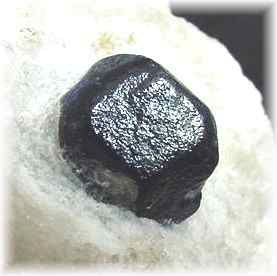 There are several
hypotheses regarding the name: from ancient latin lapis= stone and the arabic
word azul= blue, or from the Arabic lazaward, "heaven," or,
finally, from the Persian lashward meaning blue. The crystals are rare. It is usually granular,
compact,
There are several
hypotheses regarding the name: from ancient latin lapis= stone and the arabic
word azul= blue, or from the Arabic lazaward, "heaven," or,
finally, from the Persian lashward meaning blue. The crystals are rare. It is usually granular,
compact,
massive, in association with pyrite, calcite, and diopside in contact
metamorphic marbles.
Lapis lazuli was a very researched and valued stone since very ancient
times. The
ancient royal Sumerian tombs of Ur, located near the Euphrates River in
lower Iraq, contained more than 6000 beautifully executed lapis lazuli
statuettes . Lapis Lazuli was a favorite stone of the ancient Egyptians. It was considered an aid to childbirth.
.Powdered
lapis was favored by Egyptian ladies as a cosmetic eye shadow and in later
years it was used as a pigment for ultramarine paints. Pliny the Elder
described the stone as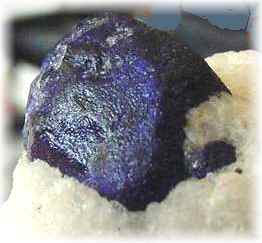 “a fragment of the starry firmament.” For many centuries the only known
“a fragment of the starry firmament.” For many centuries the only known
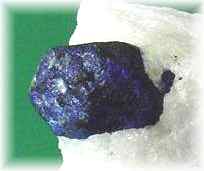 deposits were those from
Afghanistan. The first hystorical description of those deposits has been made by
Marco Polo, the famous italian traveler-explorer in its "Milione": “There is a
mountain in that region where the finest azure [lapis lazuli] in the world is
found. It appears in veins like silver streaks.”. From here it was exported to the ancient civilizations of Egypt and Sumer (Ira), and later traded throughout the East and into Europe. These mines
are still producing the finest quality lapis lazuli.
deposits were those from
Afghanistan. The first hystorical description of those deposits has been made by
Marco Polo, the famous italian traveler-explorer in its "Milione": “There is a
mountain in that region where the finest azure [lapis lazuli] in the world is
found. It appears in veins like silver streaks.”. From here it was exported to the ancient civilizations of Egypt and Sumer (Ira), and later traded throughout the East and into Europe. These mines
are still producing the finest quality lapis lazuli.
 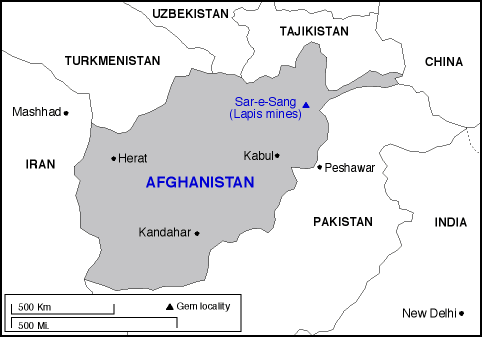 |
Map of
Afghanistan showing the location of the lapis lazuli mines. (illustration ©Richard Hughes) |
In medieval Europe it was crushed to produce the precious pigment ultramarine that was used in many sacred paintings and manuscript illuminations.
Today lapis lazuli is also mined in Siberia and in Chile notably Lake Baikal in Siberia and Ocalle in Chile, but material from these sources usually contains much calcite.
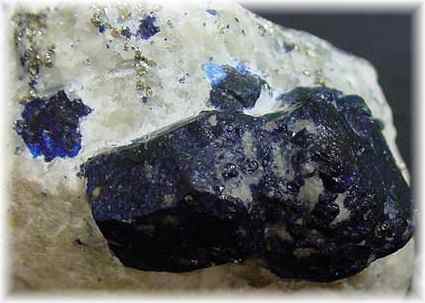
The color is typically
blue, more or less intense . Inclusions of pyrite and calcite are very common . Stones which contain too much calcite or pyrite
are not as valuable.The most reserched specimens have a dark,
nearly blackish blue, much deeper than turquoise and more intense than sodalite or azurite.
The lighter specimens, mostly of Lazurite mixed with streaks of calcite are less
desirable. and consequently fetches a lower price.
![]()